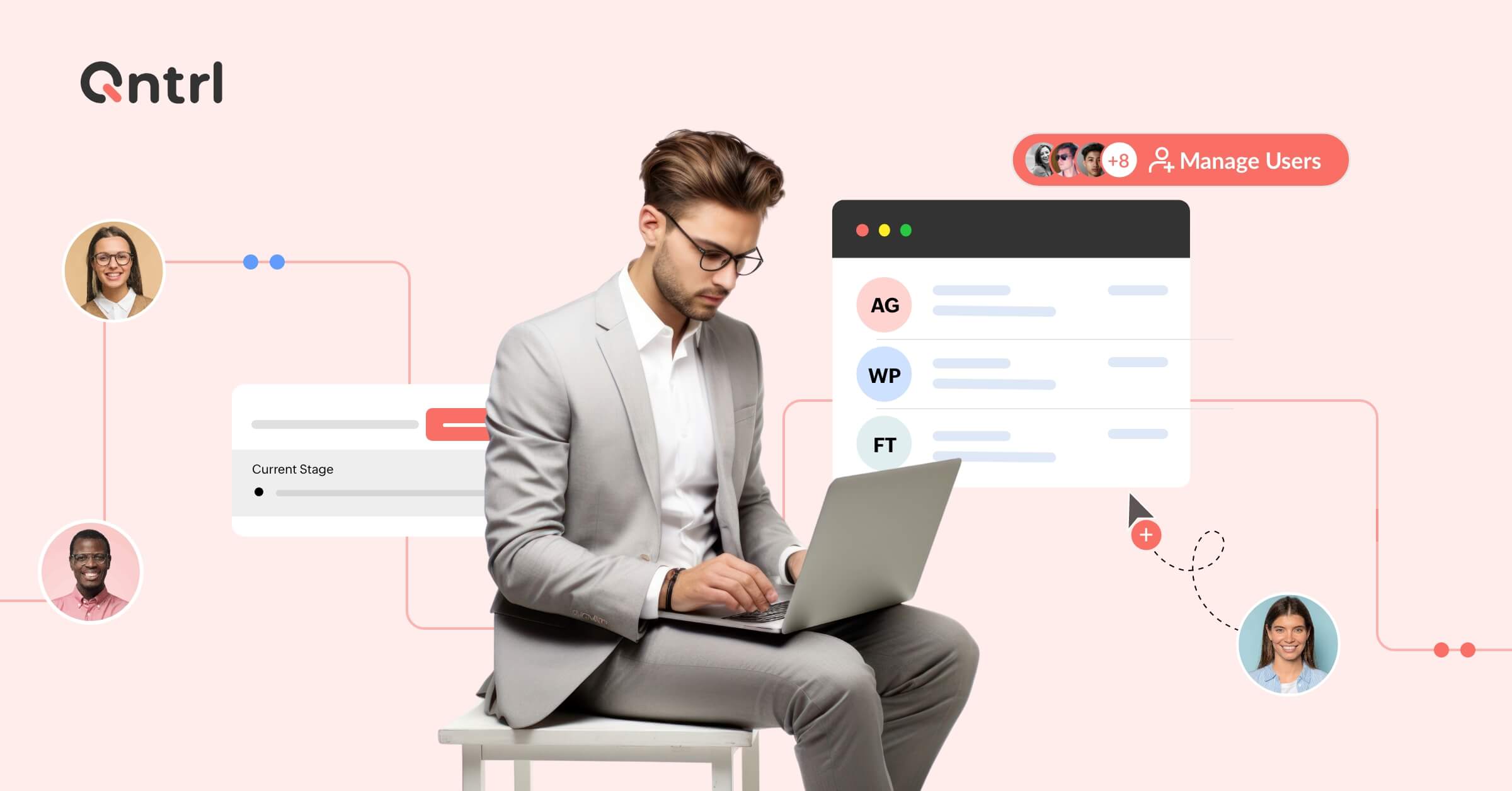Even though it is one of its core activities, human resources goes far beyond recruitment and selection. Professionals in this field are also responsible for onboarding new employees, defining job positions and salaries, evaluating performance, managing individuals and teams, conducting training sessions, creating and maintaining a benefits policy, and many other functions.
And how can they manage all of this without missing good candidates in the recruitment process? Of course, the work can—and must—be done in a humane way, but that doesn't mean that technology has to be left out of the process.
With an increasingly competitive market for most work segments, it is not hard to find recruitment processes with dozens or even hundreds of candidates in the running for a single position. This is where automation and workflow orchestration software can help HR
By automating some stages of the hiring process, it is possible to focus on more strategic stages, and also dedicate more time to work on areas that require a human touch to achieve the desired results.
But first, it is necessary to fully understand the stages of the recruitment process in order to determine when automation can enhance the process and ensure efficiency and optimization of teamwork.
Let’s check them out!
What are the stages of a hiring process?
1. Defining the role and expectations
The first step is to establish the job responsibilities, what's the expected profile to fill the open position, and the budget available for hiring. In this stage, it is nice to work closely with the people in the department where the position is open, especially those in management positions, in order to outline the expected professional for the company with more accuracy.
2. Promoting the position and screening candidates
After creating the job opening, it's time to promote it through social media platforms, the company's website, employment agencies, consulting firms, or other places where qualified professionals who may be interested in the role can be found. Then, it's time to select the people who seem to match the expected profile for the position.
3. Making the first contact and interviews
After identifying potential candidates for the open position, it's time to reach out to these people for another screening stage, whether it's a test or an interview. This is the moment when HR professionals usually assess if there is a real match with the job requirements and the company's organizational culture.
In addition to sessions with HR professionals, the candidates with the best evaluations usually proceed to interviews with managers from the department where they will be working.
4. Sending an offer and negotiating salary
When the company finds a candidate who meets the job requirements and is a cultural fit, HR professionals make an initial offer. In some cases, the person might have a counterproposal depending on their current salary or salary expectations. If both parties reach an agreement, great! It's time to sign the contract and then onboard the chosen one.
How to optimize the recruitment and selection process
The steps listed earlier are the basic ones, but the stages of a recruitment and selection process can be even more extensive depending on the industry and the profile the company is seeking, not to mention the position's role in the company's career path. For leadership positions, for instance, the process usually raises the bar, leading to a lengthy process that can sometimes have flaws.
But how can this process be optimized? How can HR professionals avoid getting lost in the initial stages and truly focus on the decisive stages to get to know the professionals applying for the position and identify the best match for the job?
Work alongside the team from where the position is open
Involving team members or even leaders from the department where there are open positions can help the HR team define what to expect from the person to be hired. Bringing these professionals into the interview process can optimize it and help find the ideal candidate in a more efficient way.
Use simple digital tests for initial stages
Get far away from overly complex tests in the early stages of the process! For certain positions, asking candidates to submit difficult projects with tight deadlines can eliminate good professionals who don't have sufficient time to dedicate to the task.
It's important to remember that many people participate in more than one selection process simultaneously or are already employed, so they need to split their time between their current responsibilities and the tests for the desired job.
Make technology an ally in the process
In order to provide visibility to other HR professionals and even the team where there are open positions, it is nice to put the recruitment and selection process into the digital world. It may seem complex at first glance, but the results of an automated culture can yield excellent outcomes for HR and employees—and for teams in general.
How to automate the stages of a selection process
Depending on the industry and the type of role, the selection process can be a long and winding road—from receiving dozens of resumes to actually getting to the moment of hiring the chosen candidate. Therefore, it is vital to put into practice strategies that can optimize this flow, save time, and allow HR to focus on what really matters.
Using orchestration software like Qntrl for the hiring process can be an indispensable tool for HR professionals, giving them even more control and visibility into the stages for the relevant departments.
Let's look at how automation can make this process smooth and seamless:
New hire requests from managers
Using software, it is possible to integrate different areas of a company with the HR department so that recruitment professionals receive hiring requests with information such as job title, department, reason for hiring, expected deadline, and priority. This possibility allows the HR team to control multiple departments and better understand which positions are more urgent.
Resume submission and analysis
The screening phase can be optimized if resumes are shared directly with the department responsible for the position, allowing candidates to be approved or rejected for the next stage of the process.
Scheduling interviews
For candidates approved in the screening, interviews can be scheduled automatically. It is also possible to use customizable email templates to invite professionals to the subsequent stages. After the interviews, department managers can easily approve or reject candidates with just one click.
Hiring
When someone is chosen at the end of the process, the system can automatically generate an offer letter. The content can be personalized according to the position's department, and the chosen candidate receives the good news via email.
Advantages of using technology for recruitment and selection
Besides saving time and improving the connection with the team responsible for the open position, these are other advantages to using workflow orchestration platforms:
Customization
With technology working as an HR ally, it becomes easy to adapt processes according to the department or the open position.
Focus on the workflow
Using a digital tool to monitor the recruitment and selection process also allows teams to implement the concept of business process management (BPM) to identify potential improvement opportunities throughout the process, implement them, and thus increase productivity and the chances of achieving good results.
Data visualization
The use of recruitment and selection software provides access to reports and metrics with essential information that can help users understand the company's situation and assist in decision-making.
Through technology, it is possible to understand which departments have more hiring requests, which area has the highest employee turnover rate, and thus develop ways to improve the strategies and keep teams engaged and motivated at work.
Finding qualified professionals who meet the company's expectations and requirements may seem challenging, and, depending on the industry, the large number of available candidates can make the process even slower and more complex. But turning the tables is not that hard!
Collaborating closely with teams in the same expertise area and automating processes are important action items that can bring benefits not only to HR professionals but to the company as a whole—a good hire can motivate teams and boost the results of any department.
GUEST WRITER: Marina Meireles








